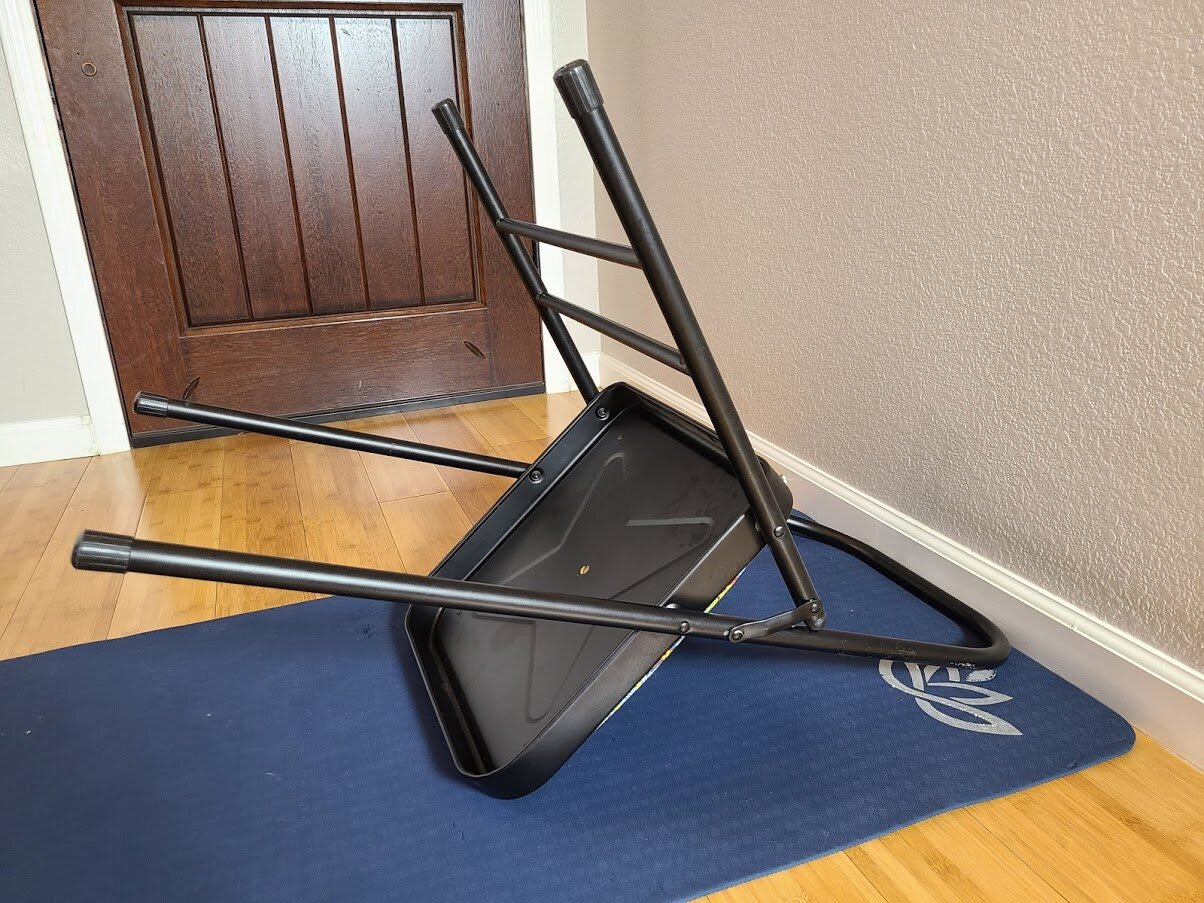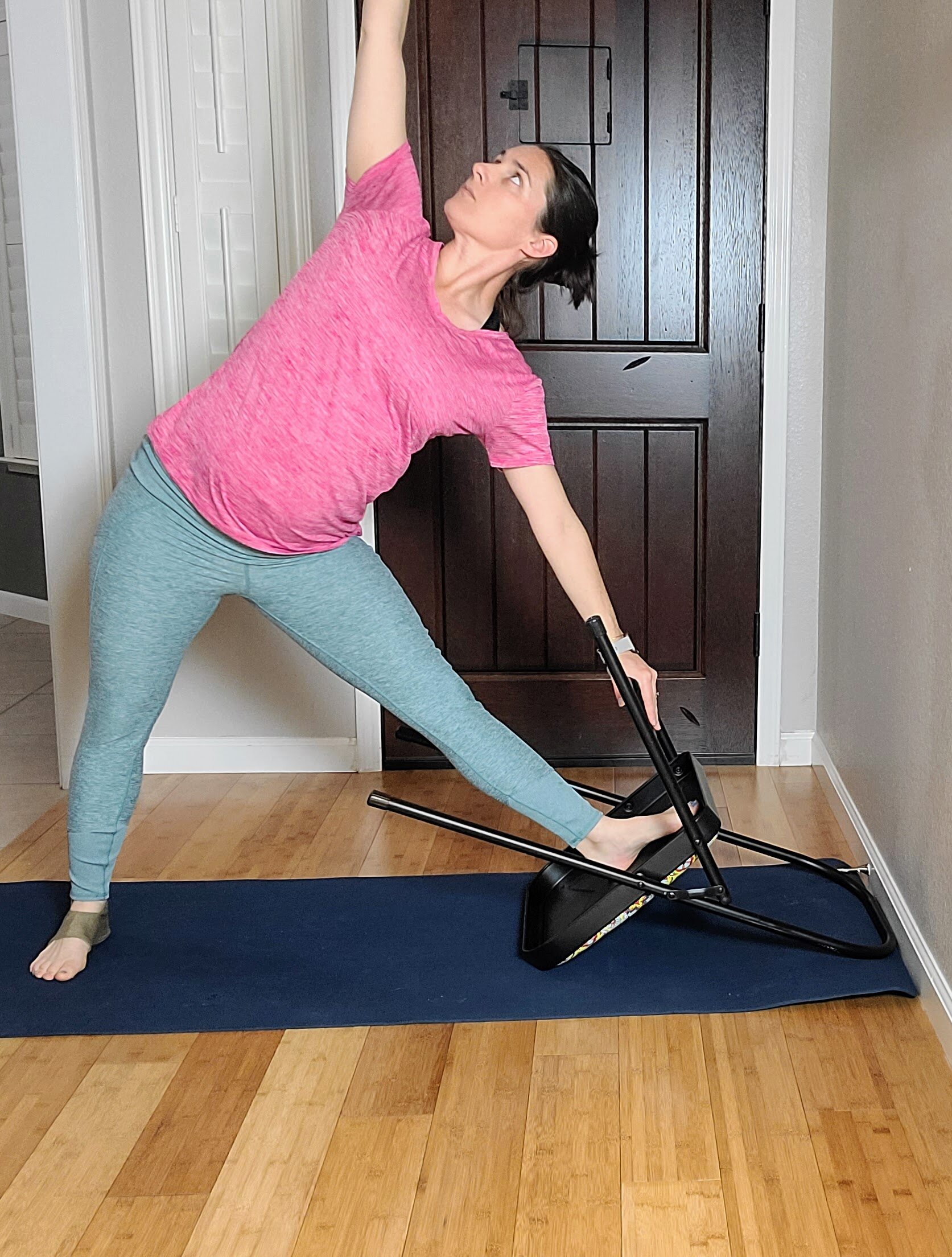Yoga Poses for Leg Length Discrepancy: Triangle Pose
/Standing yoga poses can present challenges for people with leg length discrepancies. If your legs are uneven in length, standing can be uncomfortable, your hips can be misaligned, and your legs can have differences in strength or flexibility.
Such challenges, however, are exactly the reasons you need to work on standing poses. They may be uncomfortable, but trying to find more balance between your two legs can ultimately help reduce pain and asymmetry.
One of my favorite standing poses for leg length discrepancies is Triangle Pose (Trikonasana). This basic standing pose can help strengthen the ankles, knees, and thighs and stretch the calves, hamstrings, groins, hips, back, chest, and shoulders. It can also challenge your core the more you lengthen your spine, which can provide some backache relief. It is great for pregnancy and relieving anxiety too.
In addition to its benefits for everyone, Triangle Pose is great for leg length discrepancy because it is asymmetric—each side is able to work differently, even with aligned hips. This particular leg length discrepancy variation also incorporates a chair, which allows you to stay in the pose longer, pay attention to the finer details of the pose (which allows more focus on different aspects on each side), and move the head of your femur into its hip socket (which can help stabilize and align uneven hips).
How to Do It
1. Invert a folding metal chair* (place legs up) with the backrest against a wall.
2. Turn your right foot out and place it up on the underside of the seat of the chair; step your left foot back 3 to 4 feet with your right heel, aligning with the arch of your left foot.
3. Hinge at your right hip, keeping both sides of your torso long and even.
4. As you hinge your right arm will start to come down; bring your right hand to one of the two rungs of the chair (whichever is accessible and still lets you keep your spine long) and your left arm up toward the ceiling.
5. Think of opening through the chest so the upper shoulder doesn’t collapse down. Look forward, or if it is okay for your neck, look up.
6. Stay for several breaths. To come up, press into the outside edge of your back foot to help stabilize yourself, and bring your legs together in Mountain Pose for a moment before switching sides.
Notes for the longer leg:
The longer leg is generally the weaker leg. Think about pressing down into that leg more to strengthen it with resistance.
Notes for the shorter leg:
The shorter leg is generally the stronger leg. Think about pulling up this leg’s thigh. This will help lengthen the muscles on this side and give a little more support in that usually “dropped” hip. It is preferable to wear a lift under this foot during this pose to reduce the length discrepancy.
Other things to watch for:
Notice which leg turns out more and whether you can go farther down on one side than the other. Try to make each side more balanced. This usually means doing both sides at the lesser range of motion and not going as deep on one side. While you may, over time, lose a little range on the more “flexible” side, the goal is to slowly make both sides more balanced.
* Using a yoga chair or folding metal chair is best for this inverted position. If you do not have one, determine if you have a comparably stable and shaped wood or plastic chair that will be stable to use. If not, use a block up against a wall to rest your foot and raise your toes up on the wall. This will give your front leg a little extra height and provide a little incline in the front foot.
Other posts in the Yoga Poses for Leg Length Discrepancy Series:
Extended Hand-to-Big-Toe Pose (Utthita Hasta Padangusthasana)
Tree Pose (Vrksasana)
Side Plank Pose (Vasisthasana)
Wide-Legged Forward Fold (Prasarita Padottanasana)
And sign up to get my Best Yoga Pose for Leg Length Discrepancies guide



